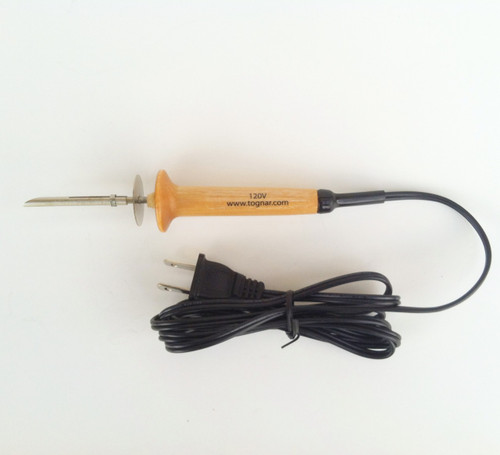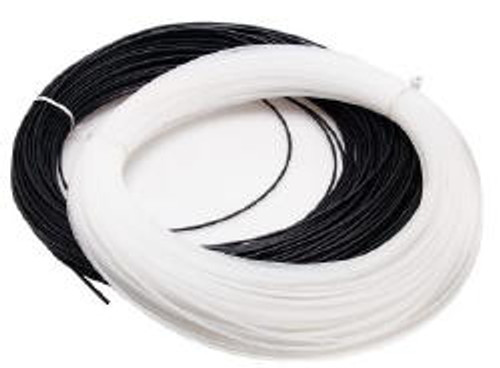Product Description
This is a 120 volt model of our base repair iron, designed for use in countries using 120 volt current, US, CAN, etc.
- Our base repair iron is a good choice for home tuners who have previously used drip candles to fill base gouges.
- It should be used on gouges greater than 1mm, it does not bond well to superficial scratches, if you want to fill gouges less than 1mm we suggest using P-Tex drip candles.
- It works with with p-tex repair ribbon, p-tex string or metalgrip so you can melt-in repairs that are more durable and cosmetically cleaner than drip candle repairs.
- The tool features a wooden handle and a ceramic heating element that heats-up quickly.
- Unlike soldering irons or woodburning tools that heat to 1000°F (538°C), it hovers around a safer 550°F (288°C) operating temperature.
- The tip can become slightly hotter if left unattended, up to 600°F (315°C) best to unplug if you think it will sit for 5 minutes or more.
- It comes with a narrow 3/16" flat nickel-plated copper tip, which melts and smoothes repair material to make pinpoint repairs without unnecessarily affecting surrounding base material.
- An optional 1/2 inch-widecurved tip for this iron is also available...it works better for melting P-Tex material into especially wide gouges or core shots (simply slide it on after slipping off the standard narrow tip).
- Replacement "standard" tips are available in case the one that came with the tool is damaged or lost.
- Click here to check out the video on how to use this tool to fill a gouge. Having trouble choosing between base repair pistol or Iron? Go Here
Tips:
- Use on gouges that are greater than 1mm deep, this tool does not work well on minor scratches, use P-Tex candles for these.
- Try to keep the P-Tex that remains above the base as thin as possible so the heat can reach the base and so you don't have as much to remove.
- Don't let the hot tip touch the base, always keep a thin layer of P-Tex material between the iron tip and the base.
- P-tex repairs bond on a molecular level, you aren't trying to melt the P-Tex Base with the P-Tex Material, you just want the base to get warm enough to excite the molecules in the base and encourage them to bond with the repair material.
- Use a Surform tool followed by a sharp metal scraper, working from the center of the repair to the extremities at first to reduce the possibility of "pulling" the repair.
- Unplug tool if not in use.
- DO NOT touch the tip, as it may cause a severe burn.
- DO NOT remove the tip when hot
- DO NOT operate the tool without a tip attached.
- DO NOT leave the tool unattended.
Product Videos
Videos Hide Videos Show Videos
Custom Field
Product Reviews
17 Reviews Hide Reviews Show Reviews
-
much better option than drip sticks
I've been using this with the different ribbon and coil p-tex options and it works great. You really need the optional wide tip for most repairs (at least as a beginner) as it allow you to lay the p-tex down a little smoother compared to the thin tip.
-
Not hot enough.
The iron did not get hot enough to melt the ptex ribbon.
-
Finally holds!
Finally a system that makes the ptex stay in the core shot (needed the wider tip, should come as standard) I was very impressed and have been riding on the repaired board 27 days straight with no sign of it even starting to lift or pop
-
Pleasantly surprised
All my previous base repair experience was with a forced hot air plastic welder or a ptex gun. This thing killed it! Easy to use. Hard to screw up your ski. 2" along the edge in a low snow year and it is still solid.
-
ptex iron
Great device, got the wider tip which is great for the wider gouges. I get over a dozen core shots a year, these tools kick ass. Make your skiis feel brand new!
-
Excellent tool
The standard tip works very well with small repairs. Found it easier to cut the ptex strip into narrow pieces for melting into the base. Fortunately have not had to use the wide tip.
-
Great tool, get spreader
The "Optional Wide Tip for Tognar P-Tex Base Repair Iron" is anything but option, it's a must-have. The iron comboed with the wide tip makes base repairs a breeze - great for applying clear ptex, no more carbon from the drip candles.
-
Works Great!
This tool works great to fix and repair core shots and even small scratches. I have had better luck using this tool compared to drip p-tex and the larger tip is a must.
 Default Currency
Default Currency
 Australia
Australia
 New Zealand
New Zealand
 European Union
European Union
 Canadian Dollar
Canadian Dollar







